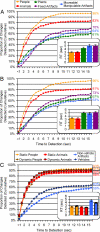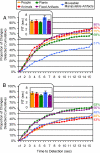Category-specific attention for animals reflects ancestral priorities, not expertise
- PMID: 17909181
- PMCID: PMC2034212
- DOI: 10.1073/pnas.0703913104
Category-specific attention for animals reflects ancestral priorities, not expertise
Abstract
Visual attention mechanisms are known to select information to process based on current goals, personal relevance, and lower-level features. Here we present evidence that human visual attention also includes a high-level category-specialized system that monitors animals in an ongoing manner. Exposed to alternations between complex natural scenes and duplicates with a single change (a change-detection paradigm), subjects are substantially faster and more accurate at detecting changes in animals relative to changes in all tested categories of inanimate objects, even vehicles, which they have been trained for years to monitor for sudden life-or-death changes in trajectory. This animate monitoring bias could not be accounted for by differences in lower-level visual characteristics, how interesting the target objects were, experience, or expertise, implicating mechanisms that evolved to direct attention differentially to objects by virtue of their membership in ancestrally important categories, regardless of their current utility.
Conflict of interest statement
The authors declare no conflict of interest.
Figures




Comment in
- Proc Natl Acad Sci U S A. 104:16396.
References
-
- Cosmides L, Tooby J. In: Metarepresentations: A Multidisciplinary Perspective. Sperber D, editor. New York: Oxford Univ Press; 2000. pp. 53–115.
-
- Tooby J, DeVore I. In: Primate Models of Hominid Behavior. Kinzey W, editor. New York: SUNY Press; 1987. pp. 183–237.
-
- Shinoda H, Hayhoe M, Shrivastava A. Vision Res. 2001;41:3535–3545. - PubMed
-
- Werner S, Thies B. Visual Cognit. 2000;7:163–173.
-
- Myles-Worsley M, Johnston W, Simons M. J Exp Psychol Learn Mem Cognit. 1988;14:553–557. - PubMed
Publication types
MeSH terms
Grants and funding
LinkOut - more resources
Full Text Sources

